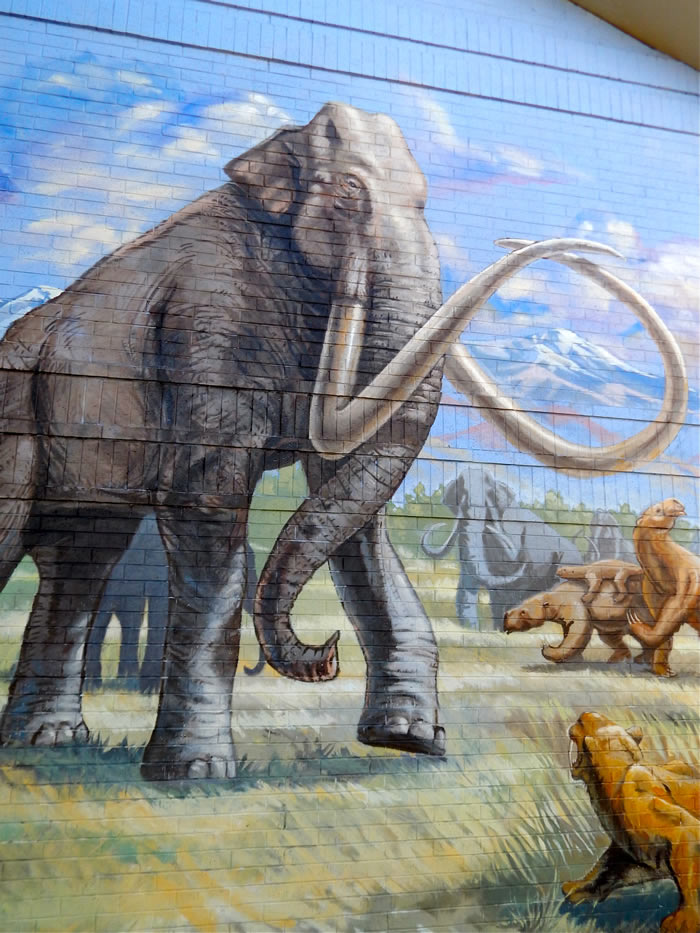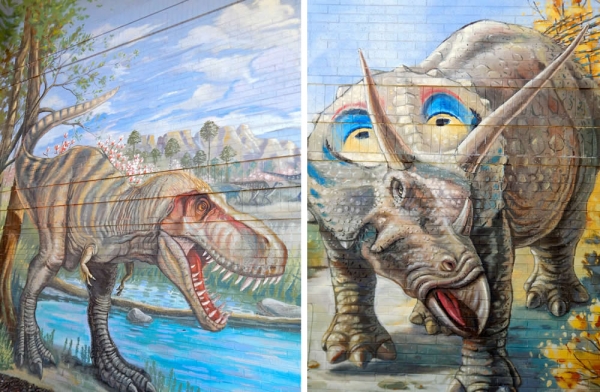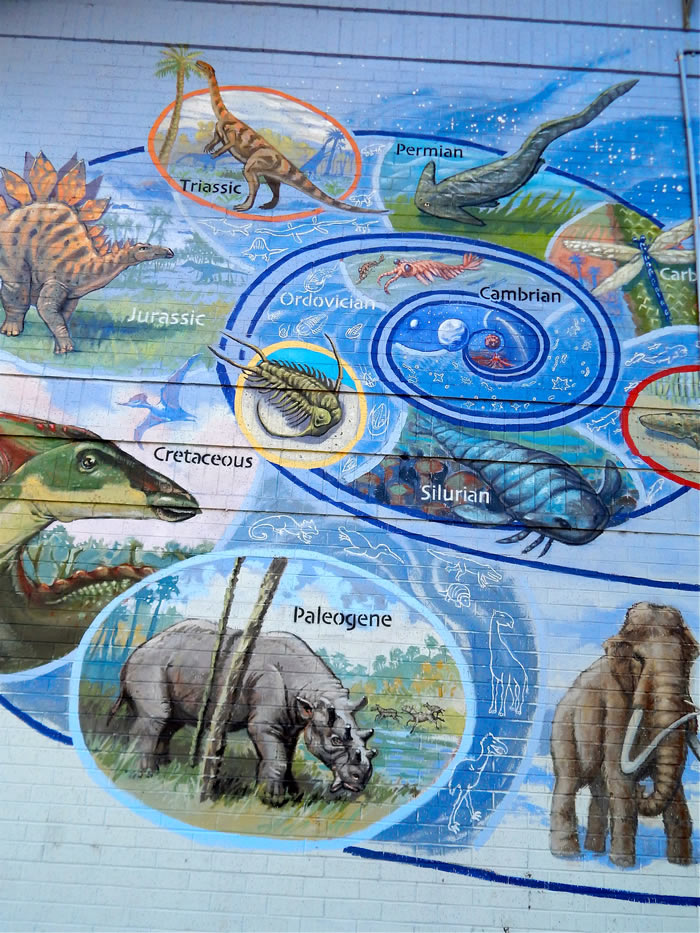Tom Ward Exterior Murals
This artwork is the original idea of hotel owners Meredith and Greg Tally, who commissioned the murals. Working in conjunction with Morrison Natural History Museum Curator Matthew Mossbrucker and master muralist Tom Ward, the Tallys wanted to represent the ancient plants and animals of Colorado, as well as a general geologic time mural to place everything into context. The team mapped out the art over the spring of 2013, with Ward painting the murals in the summer and fall of that same year.
Ice Age Colorado
Colorado’s Front Range looks largely as it does today. Grasslands and hills give way to the glacier-covered peaks of the Rockies in the distance. In the foreground, a pride of American Lions challenges a herd of Columbian Mammoths. The Mammoths posture and threaten the predators, and soon will charge if these large cats don’t back down. A colony of prairie dogs pop up from their burrows and whistle warnings of their own. Caught in the middle, a family of Jefferson’s Ground Sloths scurries through the confrontation with their young. They are in as much danger of being trampled or gored by the panicky Mammoths as they are being pounced on by the cats.
Cretaceous Rockies
This mural covers two walls, and depicts Colorado during the Late Cretaceous. The Rockies are already rising along the Western Interior Cretaceous Seaway, although the sea is not visible in the tableaux. Dawn Redwoods, flowering magnolias, and Bald Cyprus line a stream. Nestled in their leaves are something new – blooming flowers. Stomping through the right panel is a top predator that every other creature cannot ignore. Tyrannosaurus rex bends down, his toothy maw stretched almost in a smile. In the words of Ward, “I wanted to paint him so he could be alternately saying, ‘Hello’ … or, ‘What’s for lunch?’”
A herd of Edmontosaurus watch warily in the distance. Some Dromaeosaurus hiding in the reeds flee at the T-Rex’s approach. On the trunk of the cyprus, a small, nondescript lizard freezes. In the left panel, a bellicose Triceratops bellows and stands its ground, refusing to yield territory to the T-Rex. Some ostrich-like Ornithomimus run away at the showdown developing between the two giants. A flock of pterosaurs — in this case Quetzacoatalus — soar overhead, unconcerned.
So what’s caught T-Rex’s attention? Why, it’s you! Please “feed” yourself to the T-Rex, and take a picture or two.
Time Spiral
The Tallys envisioned a spiral of the Story of Life. It is meant to echo the shape of prehistoric ammonite shells, as well as a Fibonacci Spiral of The Golden Ratio. Life explodes out of the Archean Age 3.8 billion years ago, a billion years after Planet Earth formed. Each Period of geological time is represented by a totem animal, or mascot. This fanciful presentation echoes the science books that the Tallys loved as children.


